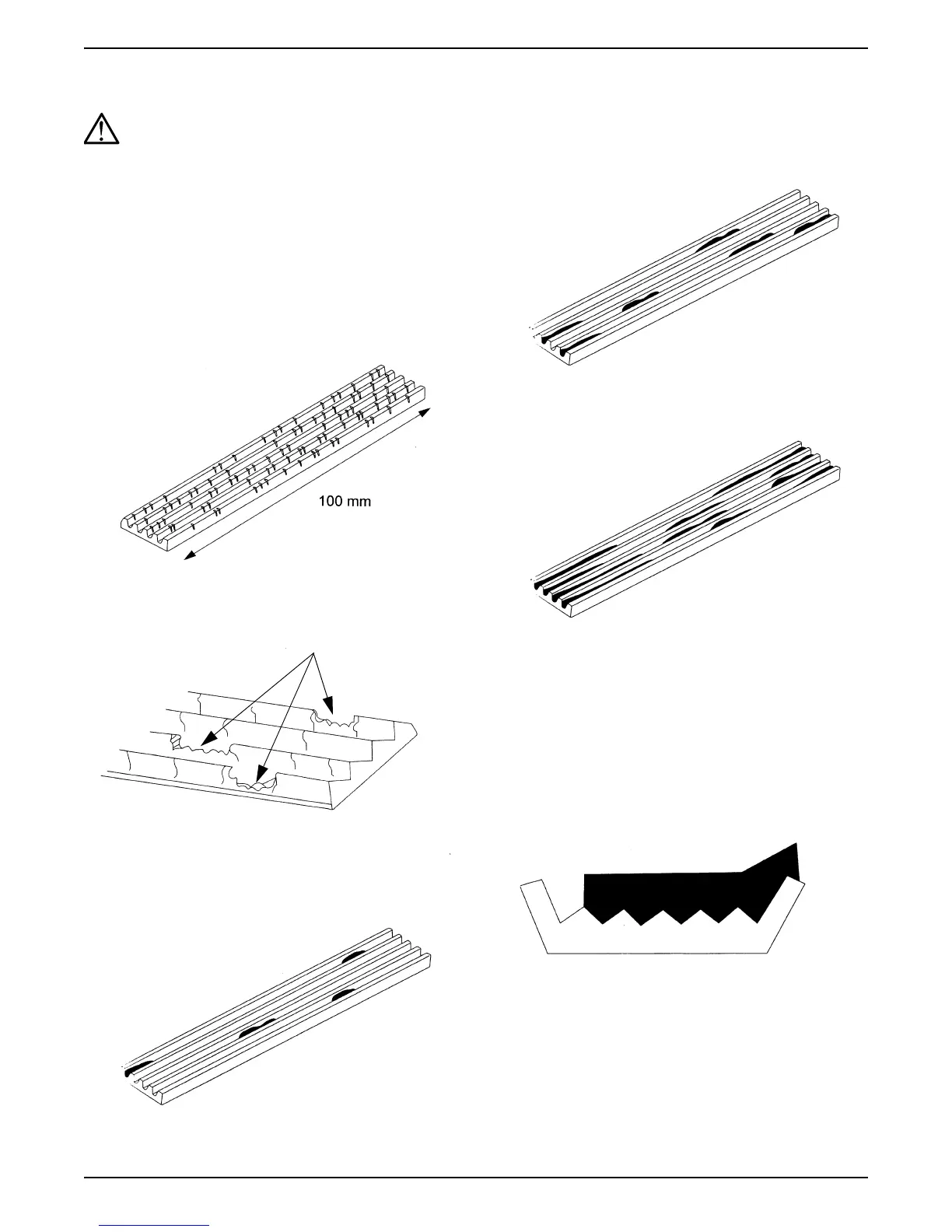DSG-423 COOLING SYSTEM
05-6
Drive Belt Inspection
WARNING: REFER TO CAUTIONS AND WARNINGS
AT THE BEGINNING OF THIS SECTION.
With engine running, observe the belt movement. It
should respond when engine is accelerated rapidly. If
tensioner moves excessively without rapid acceleration,
Install a new belt. If excessive movement still exists,
install a new tensioner.
Visually inspect the belt for obvious signs of damage.
• Up to 15 cracks in a rib over a distance of 100 mm
(4.0 in) can be considered acceptable.
• If cracks are beyond acceptable or, any chunks are
found to be missing from the ribs, a new belt must be
installed.
• Small scatted deposits of rubber material (known as
piling) is not a concern.
• Longer deposits building up to 50% of the rib height
is also not a concern, except it can result in
excessive noise.
• If heavy deposits are apparent, resulting in noise
and belt instability, install a new belt.
• Drive belt squeal that is short and intermittent is
expected and considered normal. Constant or
reoccurring drive belt squeal can occur with a
damaged pulley bearing, fluid contamination, or a
loose belt.
• Also check for belt misalignment which can cause a
chirping noise. If misalignment is found, check the
tensioner for damage, especially the mounting pad
surface. Check for a damaged pulley that wobbles.
Check mounting brackets for tightness and for any
interference.
• Check tensioner with a suitable release tool that it
moves without sticking or binding.
• With belt off, check that all pulleys rotate freely
without binding.
CAUTION: Incorrect drive belt installation will cause
excessive drive belt wear and can cause the belt to
come off the pulleys.
